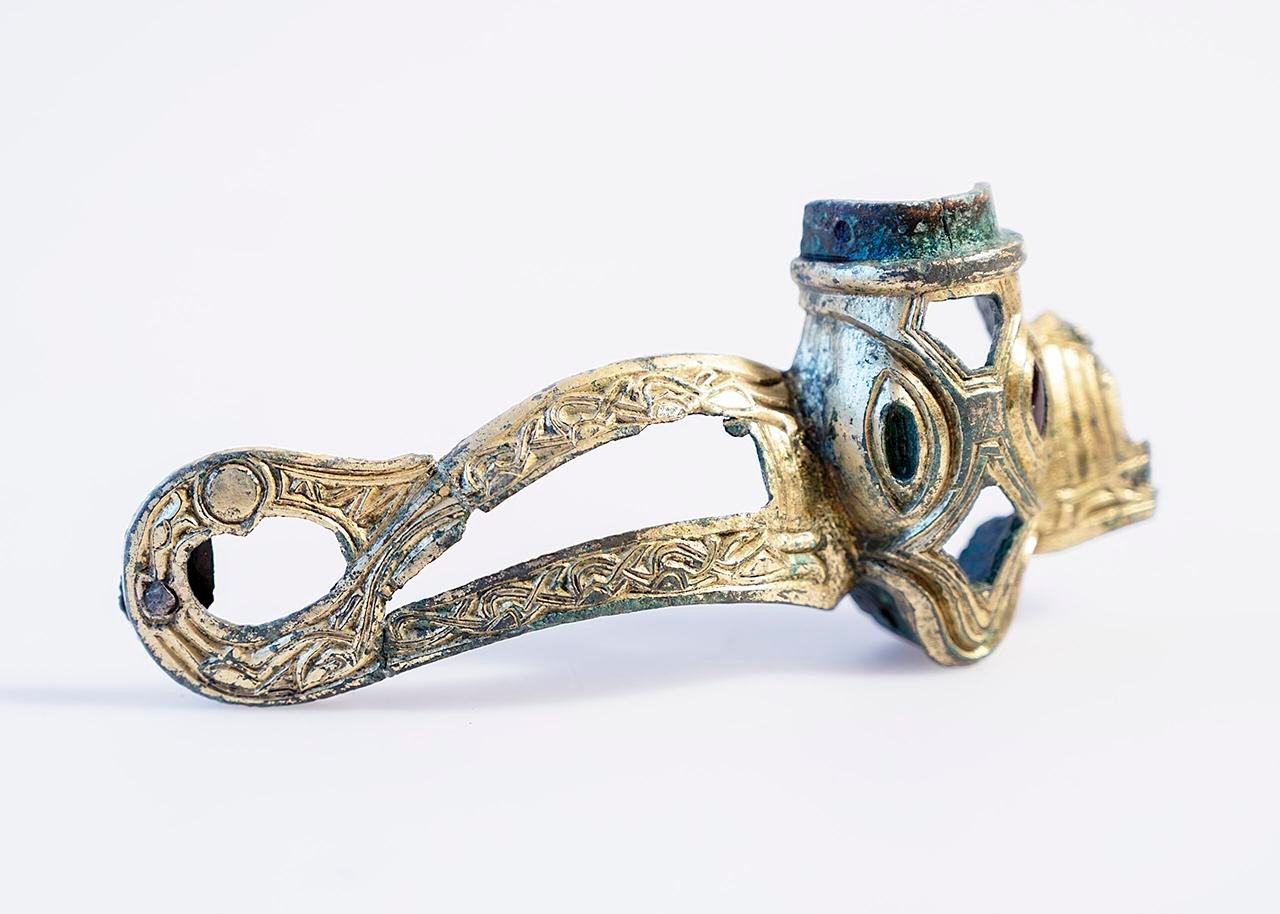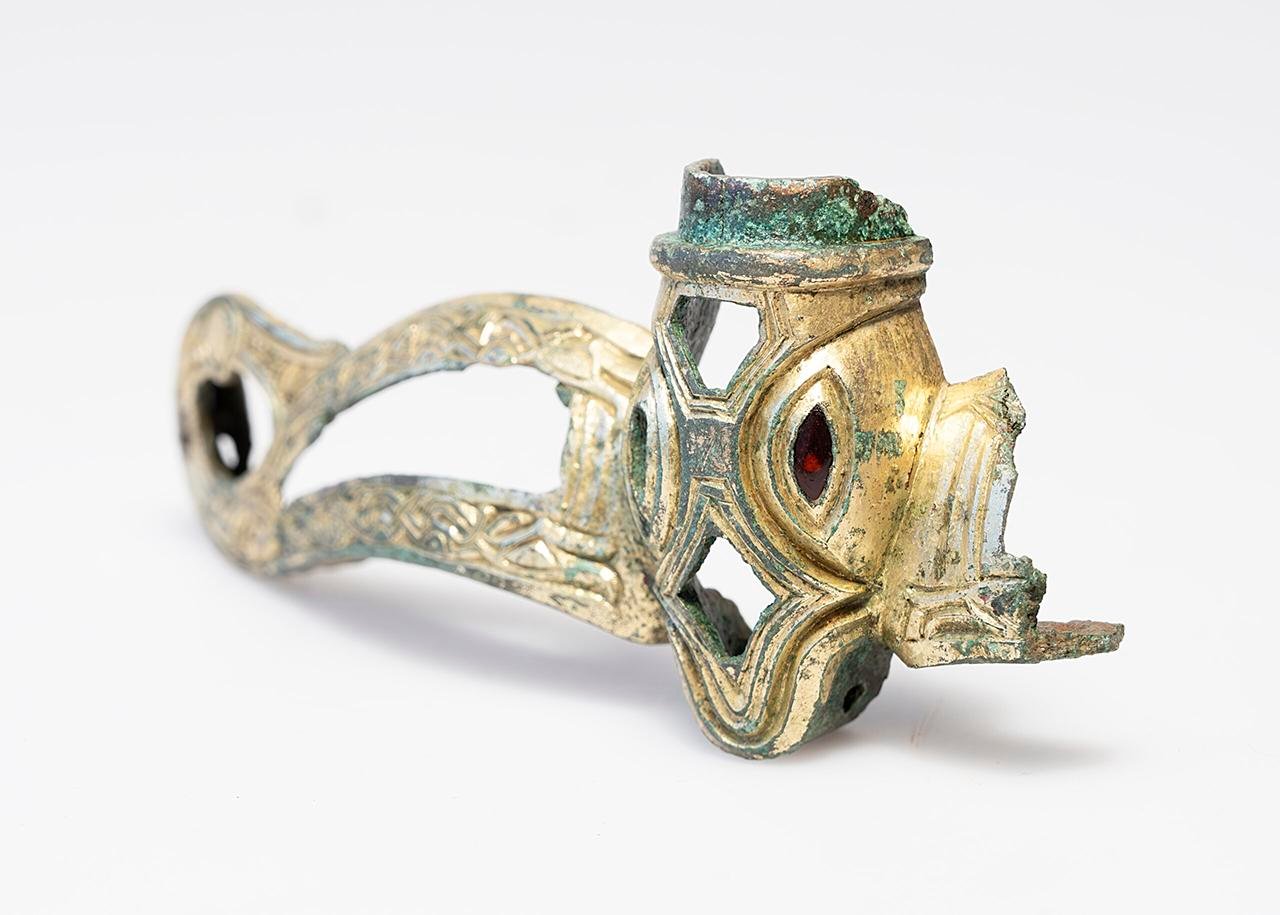An extraordinarily well-preserved section of a gold-plated, gemstone-encrusted helmet has been uncovered in Lejre, Denmark, providing new information about the country’s role as a seat of political and cultural power during the era of the Late Germanic Iron Age. Dated between 650 and 750 CE, the helmet is older than the age of the Vikings and is one of the most sensational finds of its kind in Scandinavia.
 A fragment from the rare gold-plated pre-Viking helmet. Credit: Kristian Grøndahl, Lejre Museum / ROMU
A fragment from the rare gold-plated pre-Viking helmet. Credit: Kristian Grøndahl, Lejre Museum / ROMU
The two metal detectorists from Jutland and Sweden uncovered the fragment at Lillebro near Lejre during the spring of 2024. Their find consists of two bronze fragments that together form most of the brow ridge of the helmet, a feature characterized by its curved shape. The bronze is gold-plated and ornamented with a deep red garnet, a gem that in the past was considered to represent strength.
The craftsmanship of the helmet fragment surprised archaeologists. Unlike helmets of the same period, which in most cases consisted of several parts, this brow ridge was constructed in a single unit. “It is craftsmanship of an extraordinary quality – comparable to the craftsmanship behind the famous Sutton Hoo helmet from the ship burial in England,” senior Uppsala University scholar John Ljungkvist, who closely analyzed the fragment, stated.
Archaeology director Julie Nielsen at ROMU emphasized the artwork in the fragment and its value during its time. “The ornamentation – an animal with prominent teeth and large eyes – reflects the style known from the late Germanic Iron Age,” Nielsen added. “The fragment originates from one of Scandinavia’s greatest helmets.”
 The craftsmanship of the helmet fragment surprised archaeologists. Credit: Kristian Grøndahl, Lejre Museum / ROMU
The craftsmanship of the helmet fragment surprised archaeologists. Credit: Kristian Grøndahl, Lejre Museum / ROMU
The helmet, probably worn by a king or a high-ranking person, reflects the hierarchical society of Lejre at that time. “The deep red garnet has long been ᴀssociated with strength. The intricate ornamentation on the helmet narrates a story of immense power possessed by its owner,” Nielsen said.
Archaeologists speculate that the helmet fragment never saw any fighting but was used in ceremonies or for symbolic purposes. Lejre, to the west of Copenhagen, was a political and religious hub, relatively free of local strife, where elites converged to worship, conduct trade, and reinforce ties with one another. Other similar helmet fragments found in England and Sweden indicate widespread networks of trade and cultural ties between these regions.
The prominence of Lejre in the Late Germanic Iron Age is well documented through its monumental hall buildings and grave sites. The fragment of a helmet adds a new level to this heritage, demonstrating its wealth, workmanship, and cross-cultural contact in the region.
After rapid analysis at the National Museum of Denmark, the helmet fragment is now on display at the Lejre Museum.
More information: ROMU





